Categories: Repair of household appliances
Number of views: 29958
Comments on the article: 8
Why do heating elements burn on water heaters and washing machines and how to replace them
TEN - a tubular electric heater or thermoelectric heater, a device for converting electricity into thermal energy. They differ in shape, purpose, for example, water and air, power and size. They are installed everywhere where you need to heat something: in electric stoves, heaters, water tanks and instantaneous heaters, boilers for space heating, for technological needs in production, like ballast elements to discharge excess energy and more. But any technology has its own resource.

Heating elements sooner or later burn out, while they can either simply stop working or be punched into the housing, which will result in a risk of electric shock. Let's look at the reasons for their failure, structure, differences and methods of replacement.
TEN device
The electric heater consists of a tubular body, inside of which there is a spiral or thread made of a material with high resistivity, for example, nichrome, fechrom and others. The spiral is separated from the housing by an electrically insulating, but heat-conducting material, such as periclase. At the ends of the heater, depending on the design, there may be a thread for fastening in the body of the heated tank or expansion, into which the mounting plate with a gasket rests to eliminate leaks.
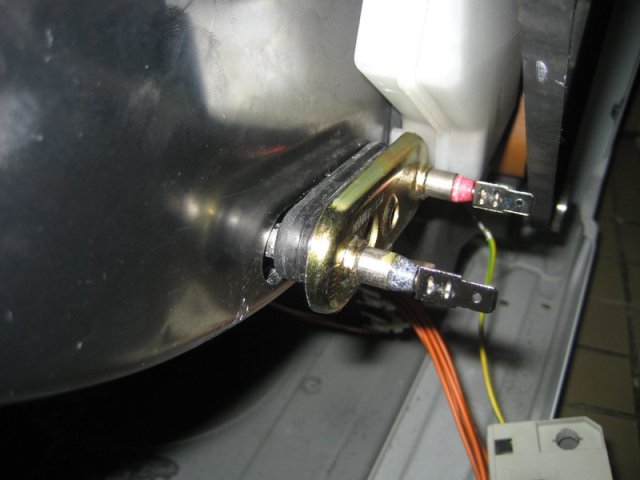
Next up are ceramic insulators, of which studs protrude to connect the supply wires or terminals.
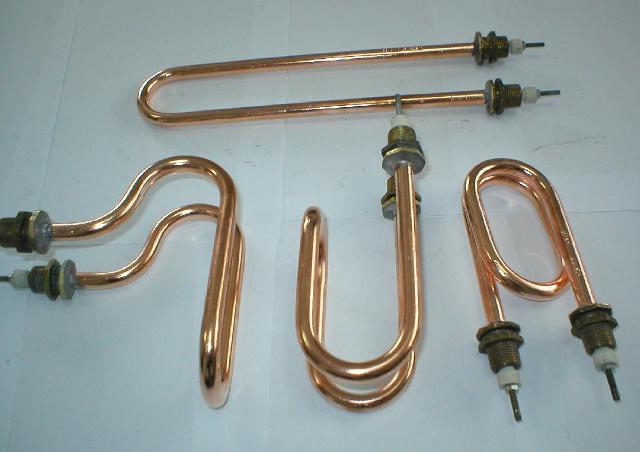
The shape of the heating element can be different, depending on its application, both U-shaped, and curved in a circle and any other types, you see the variety of shapes in the figure.

Due to the high resistance of nichrome when a current flows through it, a large power is released on it - this is heat. Depending on the design of the device, heat is transferred either to the coolant in dual-circuit systems or directly to the heated body.
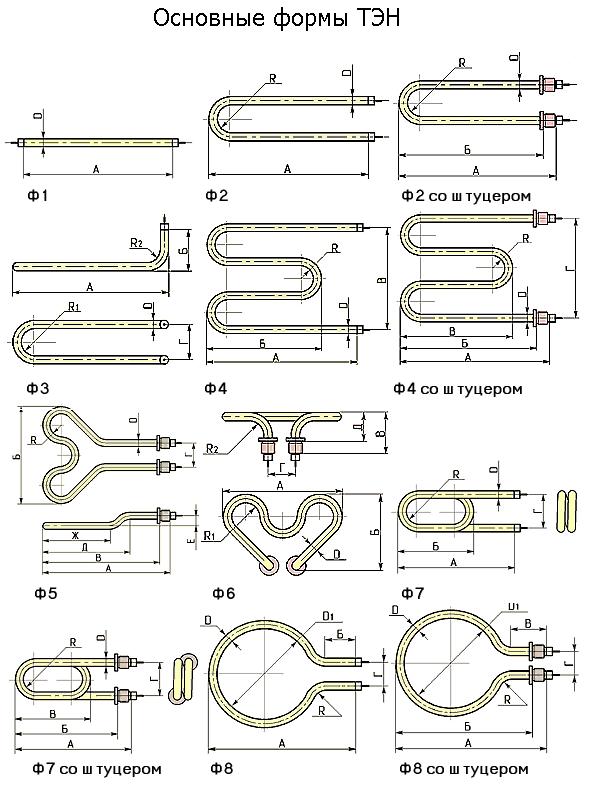
The power allocated is calculated according to Ohm's law and the power formula:
I = U * RandP = U * I

In the figure above, under the letter “a”, a schematic illustration of the mounting of a heater is shown, where 1 is the tank body, 2 is the gasket, 3 is the heater plate or flange, 4 is the heating element, 5 is the external mounting plate, 6 is the stud for fastening, “ ~ "- terminals for voltage supply, 7 - hermetic part, acting as an insulator and leakage protection, performed by welding or soldering.
“B” is the conditional location of the heating element in the electric kettle, “c” is the boiler ”,“ g ”,“ d ”is the storage and flow-storage water heater.
Reasons for Failure
Tena fail in two ways, they either burn out (breakage of the spiral), or the external part of the heater is destroyed and then it breaks through the body of an electrical appliance (for example, a tank). Let's look at the reasons why this happens.
1. Hard water
The increased content of substances in water leads to the formation of scale on the heating element. After which it gradually collapses. In addition, heat transfer deteriorates, and the likelihood of a burnout of the spiral increases.
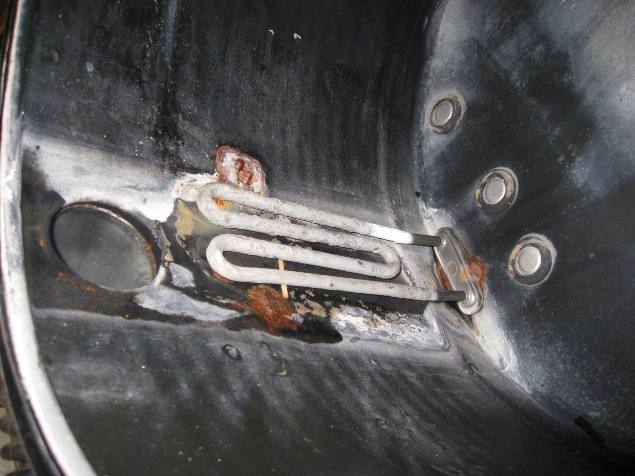
2. Power surges
Since the heater is, in fact, a powerful resistor, the current flowing through its spiral depends on the voltage. During a jump at the peak, the current can increase and the spiral can burn out instantly, and a long, even slight, deviation of the voltage from the nominal value upwards leads to the release of more power than is permissible.
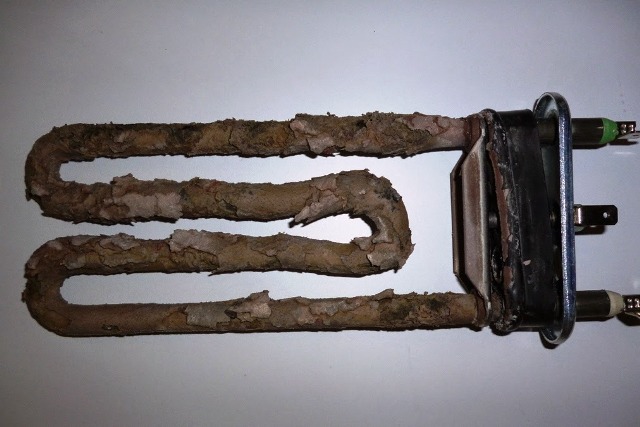
To reduce the effect of hard water, filters can be installed and cleaned periodically to remove scale. This is true for washing machines as well as for water tanks and other equipment.
One of the symptoms of problems with the heater is RCD trip, or when water from the water tank is shocked. This indicates a current leak, while the heater can continue to operate fully. It is best to replace it as soon as possible so that the further development of the problem does not cause electric shock.
To reduce the likelihood of problems that arise from poor-quality nutrition, you need to use Voltage regulator. It can be used only for a tank or a washing machine, or it can be installed on the input of electricity, then you will protect all electrical appliances in your home. For a washing machine, models up to 2 kW are enough.
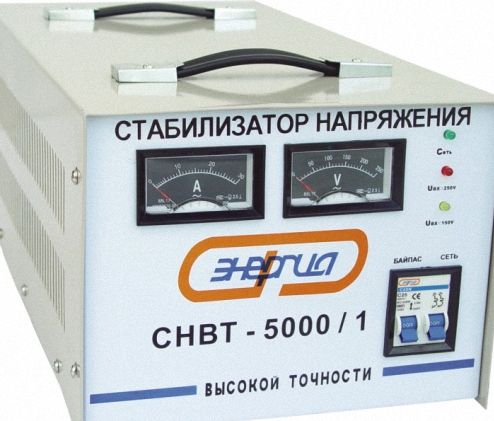
A magnesium anode is installed in the water tanks, which is needed to protect the tank and the heater from destruction. It is worth monitoring its condition and performing a preventive replacement when it is on the verge of wear. In the picture above you see a worn anode and a new one.
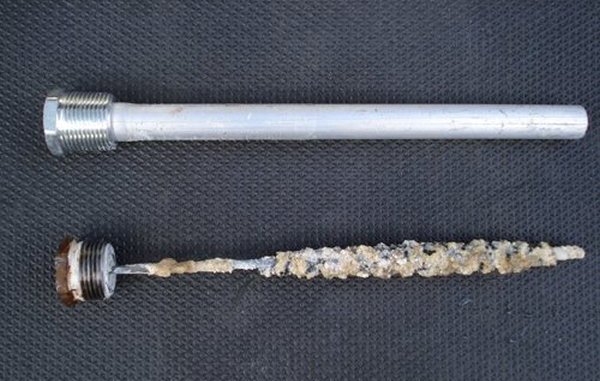
How to check the heating element
Heating element can check the dialOhmmeter or multimeter. The best way to diagnose any device is through an external examination. Particular attention should be paid to the integrity of the case, the presence of microcracks and unnatural reliefs resembling corrosion damage in structure.
Consider multimeter test method. It is necessary to measure the resistance of the heater; it depends on the power. The more power, the less resistance. It can be calculated from power, because
P = UI
Then:
R = U / I
The calculation results will show the resistance in the hot state, it is worth remembering that the conductor, the higher the temperature, the greater the resistance. When cold, it will be slightly lower.
If you see something like this on the screen:
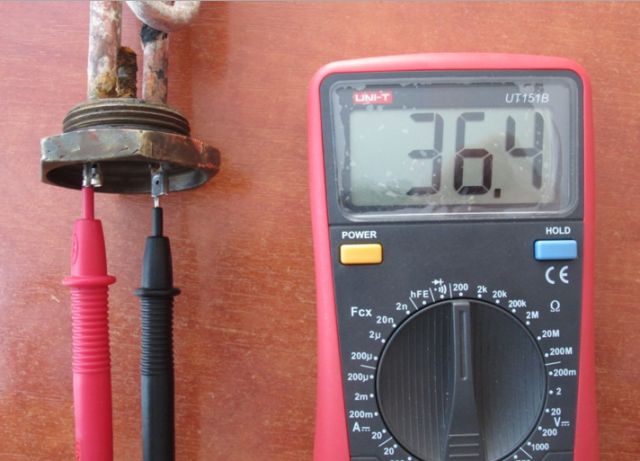
Then the heater is still operational, if the number approaches zero (short circuit), or to infinity (break) - it burned out.
The next step is to check the resistance between the power terminal and the case, it should be as large as possible, if its value is less than 500 kOhm, then there must be a breakdown on the case. Such a test is best done with a megger with a high measuring voltage (at least 500V). But if there is a specific breakdown on the case, then it will be shown by the proverbial.
Verification is also described in this video:
How to replace the heater
There is no universal advice on replacing a heater, but the process can be described in general terms. First you need to disassemble the appliance body, say a washing machine. Next, you need to find the heater, usually it is located in the tank. You will see a similar picture.
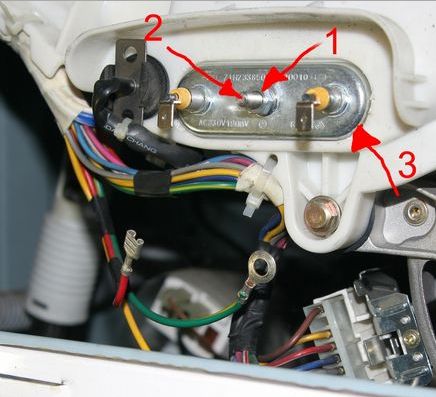
We pull out the power cord from the outlet. Next, disconnect two or three wires from the power terminals. After that, unscrew the nut (1) of the mounting stud (2). Depending on the design, there may be several.
Resting our fingers on the pin or tank body, we take out the heater. There is a gasket under the flange (3), if it is not on the heater purchased for replacement, be careful not to tear and lose the one that was on the old heater. When reassembling, be careful that the flange does not cut the gasket.
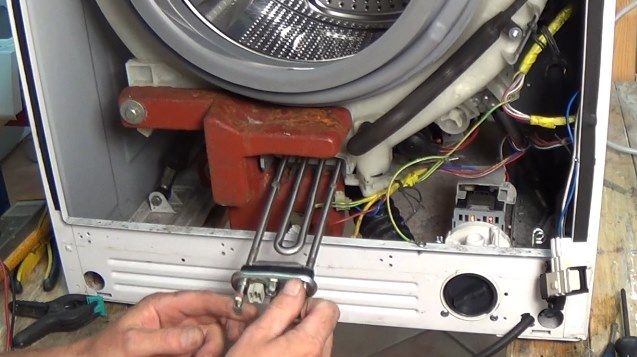
The replacement process is clearly shown in the video:
In boilers, the replacement procedure is similar to the previous example, only the appearance of the heater may differ. Before replacing, you need to drain the water, otherwise everything will leak to the floor when you start to remove the heater. It is installed at the bottom of the tank and can be closed with decorative covers or panels, plastic or metal. An example you see in the photo below.
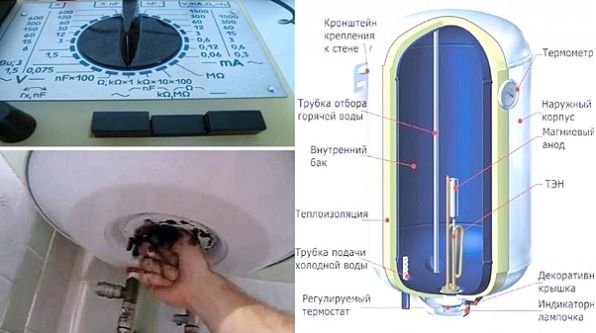
Next, you need to remove the sealing elements, disconnect the power wires, unscrew the mounting screws and remove the element.
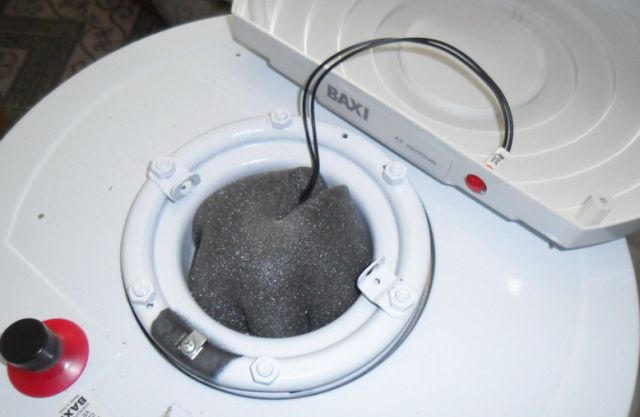
Depending on the capacity of the boiler, there may be several heaters. The verification algorithm is described above, and then collect everything in reverse order.
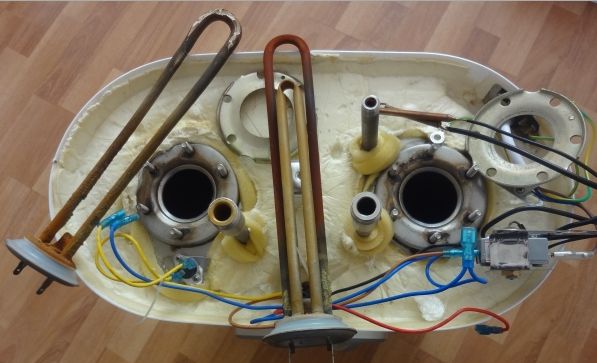
Conclusion
Replacing a heating element is a simple matter, but it requires simple tools, such as wrenches, screwdrivers, pliers, a multimeter or a Tseshka tester. Minimum locksmith skills and care to avoid leaks and other problems.
Do not install heaters of greater power instead of burnt ones.They may and will work, but the device itself is not a fact that can withstand increased heat. Do not experiment with electricity, especially if you have no experience.
See also at bgv.electricianexp.com
:
